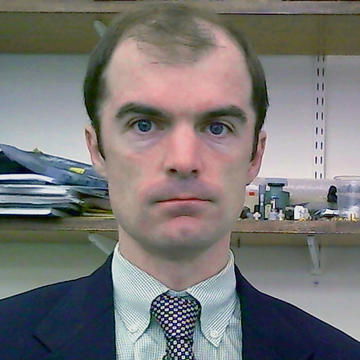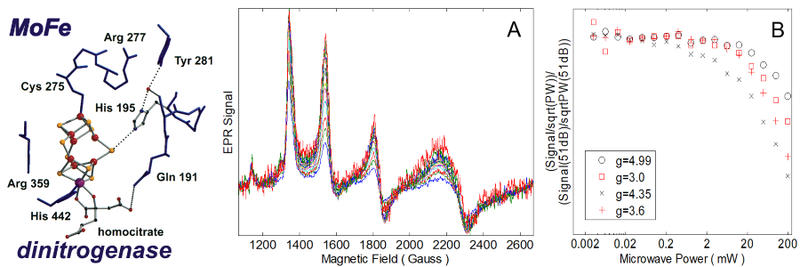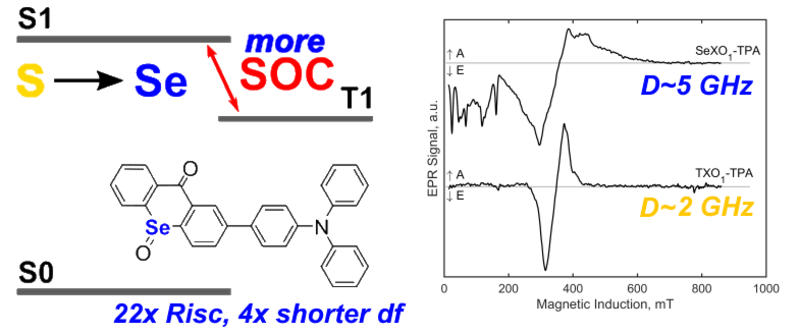William Myers

Dr William Myers
Scientific Applications Manager
My role in the department is to run the Centre for Advanced ESR (CAESR) and to be available as a contact for Electron Paramagnetic Resonance. I am active in a collaborative research with internal and external groups and UK industry. My own research interest is four areas: (Bio)Inorganic Mechanisms, Immunological Structures, Transient ESR of Molecular Materials, and ESR Spectroscopy Advancement. Additionally, I have a small group and supervise a number of visitors.
i. Bioinorganic
Bioinorganic catalysts offer benchmarks for small molecule chemistry essential to life and sustainable energy: dinitrogen to ammonia, protons to dihydrogen, and water to dioxygen. Prior work has been on VFe & MoFe dinitrogenases, the biosynthetic mechanism of the [FeFe] Hydrogenase catalytic cluster and its electronic structure, and on the spin density distributions over substrate oxygen atoms of the Oxygen Evolving Centre (OEC) of Photosystem II. Present collaborations are on small molecule N2 activation catalysts and [NiFe] & [FeFe] Hydrogenases.

Figure 1. X-band CW-EPR of Hi-CO H195Q nitrogenase, shown on left, with Hi(5)-CO and FeMo-co signals, in panel A, of the photolysis product at 12K and microwave power saturation, in panel B.
ii. Immunological Structures
Single-crystals of native enzymes and their substrates are an essential starting point in drug design. However, protein dynamics in domain motions and in subunit motions of homooligomeric and heteromeric proteins can be used to generate effective drug targets. By forcing proteins into conformations that are naturally sampled, but at very low frequency, binding partners necessary for cellular signalling can be destabilised.

Figure 2. Double Electron-Electron Resonance (DEER) of a trimeric protein alpha-Tumor Necrosis Factor, an important cytokine, showing in panel a) the DEER time domain data, in panel b) the distance distribution and in panel c) the calculated rotamers of spin label sites. For more information: B Carrington, et al., Biophys. J. 2017, 113 (2), 371-380.
iii. Transient ESR of Molecular Materials
Electroluminescence efficiency forms the basis of next generation OLED light sources and display technology that employ Thermally-Activated Delayed Fluorescence (TADF or E-type delayed fluorescence) materials. While molecules and polymer side-chains in the emitting layer of these devices have relied on heavy metals such as iridium, a new class of TADF molecules has been developed that is organic, utilizing heterocycles and specific structures to modulate their electronic properties. Research aims to identify the relevant charge-transfer and local emitter states of these molecules and understand their role in the reverse inter-system crossing (rISC).

Figure 3. Variation of chalcogenide heteroatoms in TADF molecules can strongly effect the device performance. Here, enhanced spin-orbit coupling contributes to a much larger zero-field splitting in EPR. For more information: BH Drummond, et al., JPCc 2020, 124 (11), 6364-6370.
iv. ESR Spectroscopy Advancement
The measurement of electron spin resonance signals is often encumbered in a trade-off between sensitivity and inhomogeneity of radiation over the sample volume, in limited excitation bandwidth to signal width, and more fundamentally, in spin interaction topology. Building on many years of practical experience in ESR, three approaches pursued to counter these challenges are the use of pulse shaping and probe design, alternative detecting schemes such as optical detection and spin-dependent electrical detection, and computational design of new pulse sequences.

Figure 4. An eigenmode solution for the H-field amplitudes of a X-band CW-EPR resonator model and S11 plot showing its characteristic frequency, made by a visiting student, Ben A-S., 2019.
Associated research themes
Advanced Functional Materials and Interfaces
Chemistry at the Interface with Biology and Medicine
Energy and Sustainable Chemistry
Innovative Measurement and Photon Science
Located in the Inorganic Chemistry Laboratory, Oxford, Will read Chemistry at Carleton College in Northfield, MN. After 15 months with Dr. Mary P Neu at Los Alamos National Laboratory in 2001-2002, he stayed in-state for a Ph.D. in Inorganic Chemistry from the University of New Mexico under the supervision of Professor DL Tierney. He then moved to the University of Albany as a post-doctoral Fellow with Professor Charles P Scholes and later the group of Professor R David Britt at UC Davis. His research is mainly in the applications of ESR, spanning diverse topics, from bioinorganic mechanisms to catalysts and qubits to organic materials. He joined the Department of Chemistry in June 2013.




